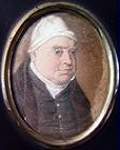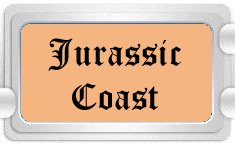

West Bay
Dorset
Smuggling
Smuggling in England began during the reign of Edward II at the beginning of the 14th Century. Wool was in great demand in Europe and the Monarch saw an opportunity to exploit this trade by applying a tax to its export. Previously, all of England's imports and exports had been free.
The Customs Service was initially set up to collect duties at major ports. As taxes inflated and more types of commodities became affected, so it became increasingly profitable to smuggle.
A customs officer had been appointed at Bridport by the end of the 14th Century and within 50 years a number of local merchants had been caught smuggling.
By the mid 17th Century, smuggling had become punishable by death and smugglers therefore began to arm themselves with suitable weaponry. Also around this time, Charles II created the Board of Customs.
In one incident in the early 18th Century, a large group of locals illegally carried off a large cargo of spirits and salt at West Bay (Bridport Harbour) while customs officers looked on helplessly.
The Napoleonic Wars at the beginning of the 19th Century caused sharp increases in duties and thus a large incentive to smuggle. The Coastguard therefore took over policing of the English coastline, the result being large numbers of violent clashes with smugglers.
The two notorious smugglers operating along the Lyme Bay coast near West Bay during the late 18th and early 19th Centuries were Isaac Gulliver and Jack Rattenbury.
Isaac Gulliver (1745-1822) was nicknamed 'The Gentle Smuggler' with the claim that he never killed during his smuggling period. Born near Trowbridge in Wiltshire, Gulliver bought North Eggardon Farm in 1776. The farm was in an elevated position adjoining Eggardon Hill. He planted a circle of trees to act as a landmark for incoming smuggling boats from Lyme Bay along the Chesil Beach for landing contraband at West Bay (Bridport Harbour), Burton Bradstock, Swyre and West Bexington. It is alleged that his helpers were recognisable because they wore white wigs. Eventually, revenue men cut down the trees and Gulliver moved on in 1780. Gulliver's Lane still exists today, leading from the hill.
Jack Rattenbury (1778-1844) was nicknamed 'Rob Roy of the West'. Born in Beer, at 22 years of age he married a Lyme Regis girl. His occupation was as a fisherman, pilot, seaman and smuggler. Ultimately in 1837, Rattenbury published a book entitled: 'Memoirs of a Smuggler'. In one incident at West Bay, Rattenbury took charge of a vessel to pilot out of the harbour. Unfortunately, the ship was boarded by the press gang before it was able to set sail and Rattenbury found himself awaiting Naval Service. He then saw his wife walking towards the vessel and asked the lieutenant commanding the press gang if he could speak to her. This was refused, so Rattenbury made a run for freedom. In the resulting chase, his wife grabbed the lieutenant, to which the townspeople then joined in the scuffle to allow Rattenbury to make his escape.
Probably the last major smuggling run in the area occurred around 1882 and taking almost 6 months to land their tubs of French brandy. Chideock smugglers put to sea from Seatown to rendezvous with a French vessel in the bay. The landing of tubs at Eype was interrupted by a Coastguard patrol, resulting in the death of a smuggler. The boat put to sea again and sank the remaining tubs off Seatown. Months later, another opportunity arose to land some tubs at Burton Bradstock, but the majority of contraband still remained at sea. Another attempt was made, this time at Thorncombe Beacon, just west of Eype, but again the Coastguard thwarted their efforts. Days later a further attempt was made, this time hiding some brandy tubs behind the sluices at West Bay. Eventually, the remaining cargo was landed at Abbotsbury.











